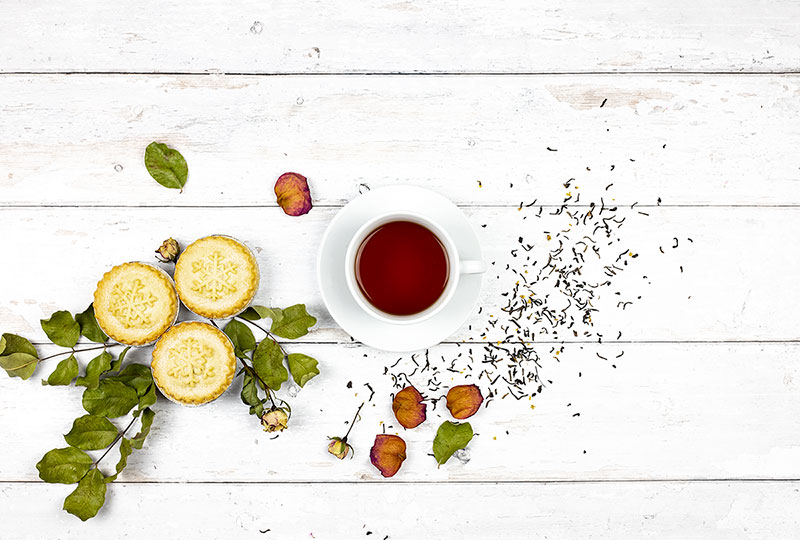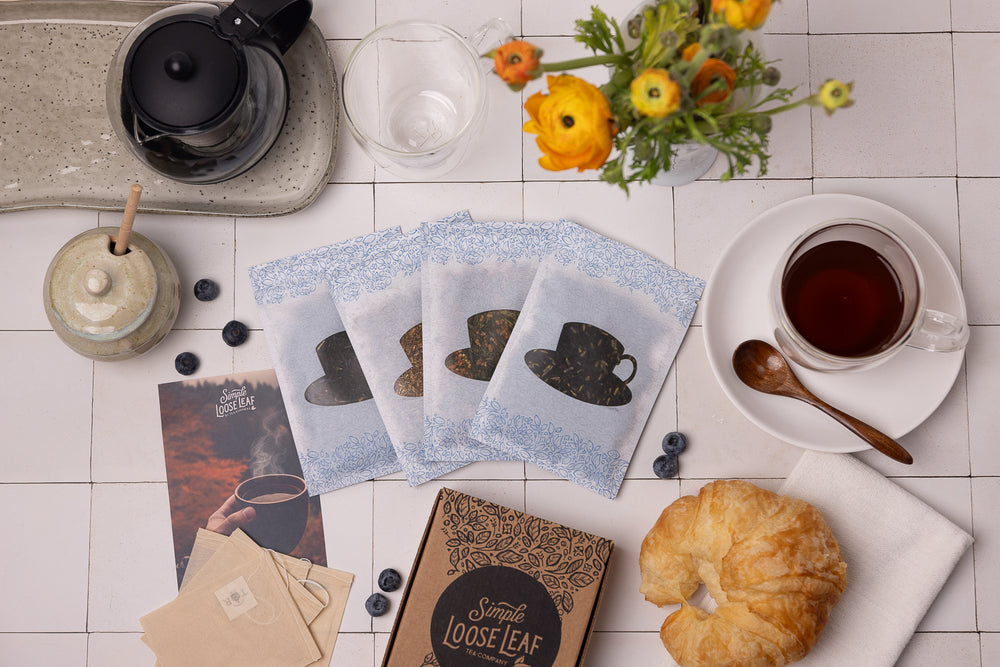Food and Tea Pairing Guide
This post may contain affiliate links. Simple Loose Leaf is a participant in the Amazon Associates Program, an affiliate advertising program designed to provide a means for sites to earn advertising fees by linking to Amazon.com. When having a simple cup of tea is just not enough, it’s time to experiment with tea and food pairing. Yes, tea goes great with many dishes, deserts and even chocolate. Read how to pair tea with different flavors.
Generally, what foods pair well with tea?
You can pair all food with tea. In fact, tea and food have always been an excellent match. Similar to a bottle of wonderful wine, a pot of delicious tea can enhance and complement flavors of any dish – from savory to sweet. Just like wine, some teas go well with spicy food, while others may be great with very sweet desserts. In fact, many tea traditions include both tea and food. For example, a traditional afternoon tea always includes finger sandwiches, small cakes and scones with clotted cream and jam. Breakfast teas have a robust flavor that goes well with a hearty meal. Japanese tea ceremony often includes aesthetic sweets, that go well with richness and slight bitterness of matcha tea. Sushi restaurants always offer a cup of konacha tea, strong green tea made of gyokuro and sencha leaf particles. Konacha is a great palate cleanser. What does that mean? With drinking strong, sometimes slightly bitter green tea, you will enjoy every bite of your meal. Chinese dim sum restaurants will usually offer a pot of strong jasmine green tea or pu'erh tea, both great palate cleansers. Dan Cong oolong teas go well with most Chinese dishes.How to Pair Tea with Food
There is a perfect tea pair for whichever food you want to eat, The best way to learn how to pair your tea is to learn how to brew itproperly and understand its flavors. To pair tea with food, you should know a few basic rules. Not all teas will go well with all dishes. Try to think which tea flavors match or may complement the flavors of your dishes. For example, fresher green dishes will go well with fresh green teas. Strong and malty teas will go well with stronger flavors. Then think of the flavor intensity. Delicate white tea will never taste good paired with roasted pork, but they may taste wonderful with lighter vanilla cream desserts.Best foods for different types of tea
- Choose strong black teas for hearty meals. They have a slight astringency and a deep and often malty flavor. Assam is a great example. Pair it with rich breakfast such as fried eggs and sausages, spicy food and meat pasta.
- Green teas are great with lighter food, salads and fish. Sushi for example always goes well with vegetal and fresh Japanese green tea. Choose teas with stronger umami flavor for fish dishes, stronger smoky green teas such as Gunpowder for chicken dishes and lighter pan-fired teas such as Dragon Well for salads.
- The flavor of oolong tea can be either light or strong, depending how oxidised it is. Choose lighter oolong teas with lighter food, and stronger oolong teas with rich meals. However, they will never be as strong as black teas, so don't pair it with greasy foods. An example of lighter oolong is green Ti Kwan Yin with a floral green flavor. A great example of dark oolong is a rich and fruity Da Hong Pao. They often have a light smoky or roasted note and go well with dry snacks like dried meats or nuts.
- Pu’erh tea has a very strong, earthy, but not bitter flavor. It goes well with stronger flavors and oily foods and dim sum.
- White tea is often very delicate. It will go well with lighter, less sweet desserts and lighter dishes such as salads or lightly seasoned fish.
Tea and Cheese Pairing Ideas
Maybe you’ve never thought of pairing cheese and tea, but they match perfectly together. Imagine pairing cheese with honey and walnuts, and you may get the idea. More creamy cheeses will go well with Earl Grey and White Tipped oolong. 2nd flush Darjeeling and a smoky Lapsang Souchong may be a wonderful choice too.Tea and Cake Pairing Ideas
Tea and cakes are a match made in heaven. Floral and scented teas are a great choice to have with a slice of delicious cake. For example, try pairing citrusy Earl Grey with lemon desserts. Matcha green tea goes well with very sweet desserts with red bean paste or fruity flavors and even cheesecake. Learn how to pair tea with chocolate here.
Best Snacks for Tea
Want to choose the best snack for your tea time? Find an inspiration in the traditional afternoon tea party and other tea ceremonies. For example, simple finger sandwiches with fresh bread, light creamy cheese or avocado and salmon are a great choice, especially with green tea. Fruit salads go well with lighter white, oolong or green teas. Scrumptious scones with clotted cream go very well with traditional black tea blends. Instead of serving scones with jam, add a teaspoon of jam into your tea instead. Choose the jam that matches the flavor of your tea. For example, try pairing Simple Strawberry Black tea with strawberry jam and Simple Peach Black with peach jam. Cinnamon buns are a great dessert for serving with spicy chai lattes. Simple tea cookies are great with black tea with milk. Lemon cakes and biscuits go well with citrusy flavor of Earl Grey tea. If you love nuts, green tea with mint may be a wonderful choice.
More from:
SLL



Leave a comment